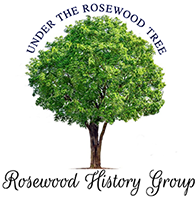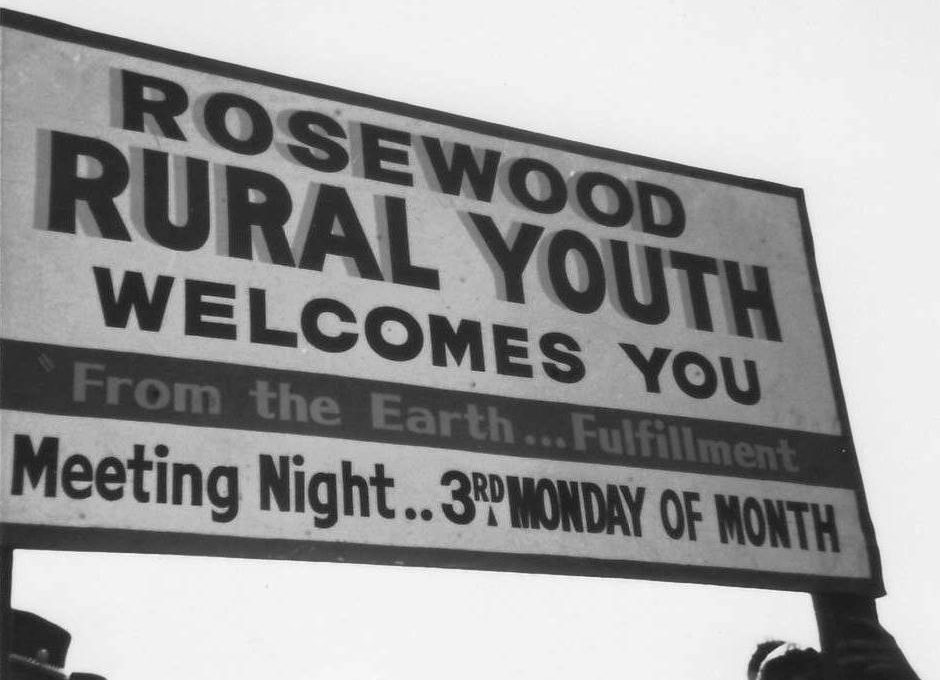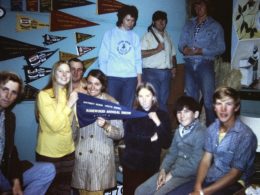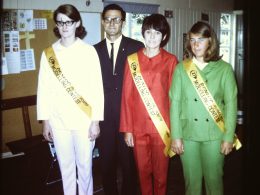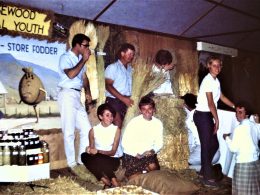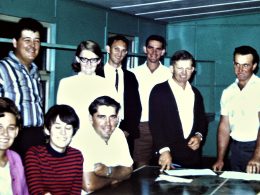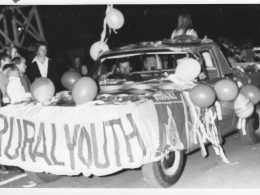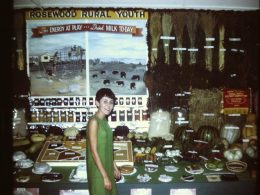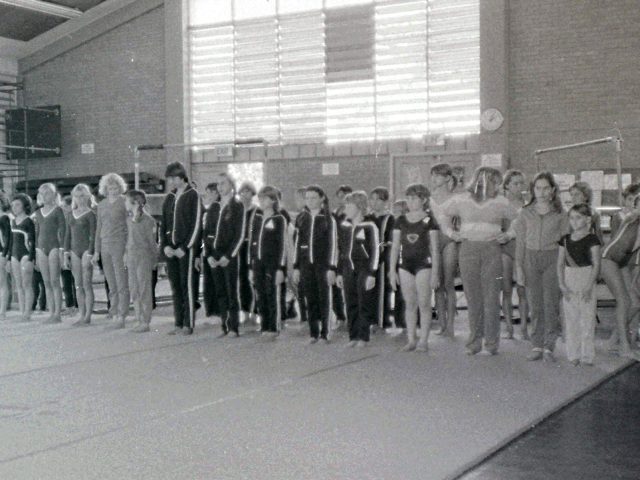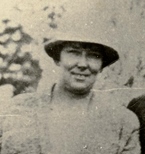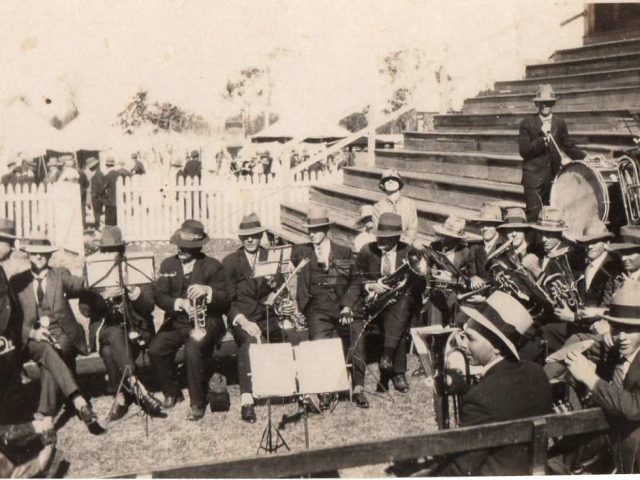Background
The Junior Farmers movement was developed in 1947 by the Department of Public Instruction with the original aim to provide a bridge between the completion of formal education and active participation on the farm. It consisted of a number of clubs which had been set up by the first State Director/Organiser Mr. Tommy Williams who had worked closely with the Project Club Branch and the Department of Agriculture and Stock in establishing the Junior Farmers’ Movement. They had a common aim and purpose and some 1,500 active members. The clubs comprised of boys and girls between the ages of 15 and 25. The aim initially was to encourage youth to accept the challenge of the drift to the cities and accept farming as a worthwhile calling. The aim was to provide them with useful knowledge of agriculture as well as the principals of co-operative effort, citizenship and loyalty through their work as a body. Queensland Country Life, December 1950
In August 1950 many clubs staged displays of agricultural produce, home manufactures, etc at their local district shows. Queensland Times, 10 Aug 1950
In 1952 John Park became the second State Organiser and State Secretary/Treasurer.
He proposed what was, at that time, an almost unheard-of principle in the training of youth leaders namely that young people should elect their own officers and run their own youth clubs with the assistance of but not the control of elected adult advisor panels. This became the “trademark” of the organisation and something that set it apart from most other youth organisations of the time.
John Park believed that a group of clubs, founded on these principles could in time bring themselves to the stage where members from within the organisation would be able to lead their own movement at State level without needing the oversight of more “mature” non-member leaders.
This, more than anything else, is what John Park gave to the Junior Farmer movement in Queensland. He organised the first Junior Farmer’s State Conference held at Atherton in North Queensland in 1953 which marked the start of the movement as an official state wide organisation with its own constitution. Rural youth History Project 2022
Local Clubs
The first Junior Farmers’ Club formed in Queensland was at Helidon in 1949. Boonah and Kalbar clubs also formed in this region and were very active, hosting guests from a USA equivalent 4-H Club in 1953 as part of The International Farm Youth Exchange Programme that had begun in 1948. These international guests also visited the clubs in Toogoolawah and Esk. By 1954, the exchange program had been running in Australia for two years and a 25-year-old farmer from Kingaroy was the first Queenslander selected from 10 candidates across the state to be a delegate to visit the U.S.
Marburg resident, Bob Krause as a teenager wrote to the Junior Farmers organisation with the aim of establishing a local club which then began in Marburg in 1954. Lanefield Junior Farmers followed around 1955/56. The meetings were held at Ashwell State School.
In 1954 the state was divided into 12 zones and conference was held in Brisbane with representatives from each zone attending, now representing over 4000 junior farmers. In July of the same year a state conference was held at Atherton with ninety delegates. Ipswich Show Society announced they had organised a Junior Farmers’ Club exhibits competition hoping to attract Toogoolawah, Kalbar, Esk and Boonah to compete. By December 1954 there were 105 clubs across the state and 5600 members. Exchanges were now being made with the United Kingdom, U.S.A. and New Zealand for periods of 6 months and programmes included debating, art of speaking, discussion groups and forums with aim of developing better citizens.
Young Bob Krause was very proactive in his Marburg Club. He approached the owner and manager of radio station 4IP Mr W J Johnson and suggested a regular program to talk about what was on, any interesting new items in a segment called Rural Youth Speaks. It ran for about 10 years.
The name Junior Farmers changed to Rural Youth in 1965. What had been the Lanefield Junior Farmers Club became Rosewood Rural Youth. In the 1950s Daphne Rodgers (nee Forrester) was President of the Rosewood Junior Farmers.
By 1970, Bob Krause, along with Bill Yarrow and Alan Steinhardt, became an advisor to the Rosewood club, having passed the membership age of 25 and the Marburg Club had closed.
The members were not just young farmers. A large percentage were teachers. The local club met at the Farmers’ Hall in John Street until the old slipper factory, that had been used temporarily as the first high school in the 60’s, was moved from opposite the station to the showgrounds to become the new show hall. Rosewood members had a great time dragging each other across the floor on sacks with pops spread to help make it slippery for dancers to slide across. Meetings were then held in the showgrounds.
By the 1980’s clubs across Queensland were no longer receiving government support and started to close. Although Rural Youth still runs in some other states, especially WA and TAS, there are no clubs left in Qld. There is a website run by past members trying to piece together the history of the club to produce a book. A number of reunions are ocurring across the state.
What Clubs Did
There was a big focus on public speaking and debating. They were well trained in meeting procedure and chairmanship, following on from Project Clubs in schools. Some clubs covered rural skills such as ploughing and girls focused on fruit and vegetable preserving, dressmaking and cooking. There was a strong social emphasis with dances, field days, social outings and other events. They became involved in their local communities with fund raising.
1970s activities of Rosewood Rural Youth
- Rosewood Club took part in the Area 3 Rally at Boonah and hosted one at Rosewood
- Rosewood Club hosted Exchangees with Diane Birch from the UK Young Farmers Club in 1971, and Brenda Allen from the 4-H Club in Oklahoma, USA in 1972, both staying with the Stubbs family.
- A drama competition of one-act plays was held at Harrisville with Harrisville, Kalbar and Rosewood competing.
- Rosewood did fund raising for the Miss Australia Quest with entrant Jenny Stubbs and for the RSL Queen of Hearts with entrant Yvonne Twidale. To raise money there were dances, chook raffles and a bikeathon with the Bayside Club riding from Wynnum to Mt Walker, while local members went from Rosewood to Mt Walker, including Jenny and Shirley Stubbs on a tandem.
- Dances were attended and sometimes held at the RSL Memorial Hall and the Rosewood Show Hall.
- Show displays were set up at various shows including Marburg, Rosewood, Ipswich, and the Ekka as part of Moreton Region. Displays included farm produce and items such as sewing, cakes and preserves.
- Inter-club socials were held such as visits to the Tamrookum dances, or visits to other clubs such as Indooroopilly and Bayside.
- A free bus trip was organised in 1971 to take children who had never been to the beach on a day trip to Currumbin Sanctuary, Fleay’s Wildlife Park and the beach.
- The State Conference Cairns in 1972 was attended by some members who drove up together.
- Social activites included ten pin bowling, tennis, barbecues, hayrides, parites and dances organsied by various clubs. Fun weekenders were held on the Gold Coast and at Kalbar in 1971.
In 1971 Rosewood won the shield for top club at the Area 3 Rally. They also won the shield for the best Rural Youth exhibit at the Rosewood Show. Ann Little (nee Ham) won the district modelling competition and Linda Ham came second. Norman Embrey was a finalist in the under 21 exchangee competition. Trevor Armstong was top boy over 19 at the area rally (tie) and finalist in the state exchangee competition. Graham Chiristensen was was top boy over 19 at the area rally (tie). Jenny Stubbs won best actress in the district play competition, top girl over 19 at the Area 3 rally, top girl of the day at the Area 3 rally and that year raised $1150 for the Miss Australia Quest. It was an outstanding year for Rosewood Rural Youth.
Some members in the 1970s included
- Embrey: Barry, Alwyn, Norman, Phillip, Graham, Lurlene Dorelle – farmers
- Christensen: Graham, Cheryl – farmers
- Ham, Janet – teacher, and Ann Ham
- Stubbs: Jenny – teacher, Shirley Stubbs
- Armstrong, Trevor (other Armstrongs including Meryl were members in other years)
- Davidenko, Tania – teacher
- Twidale, Yvonne – teacher
- Kerwitz, Denise – teacher
- Edgeworth, Kevin
Advisors in the 70’s were Bob Krause, Alan Steinhardt and Bill Yarrow.
This is by no means a complete list. Anyone with memories or information about Junior Farmers or Rural Youth in Rosewood, please send your information in to us via the contact form.
Compiled by Jenny Stubbs
Photos: Jenny Stubbs (B&W) and Bob Krause (colour)

